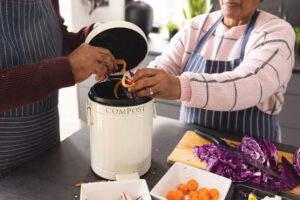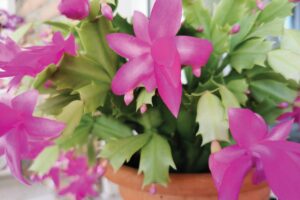As the vegetable growing season quickly screeches to a halt with fall frost, there is one crop that can be planted now for next year. Garlic is an easy-to-grow bulb crop that does best when planted now for next year’s summer harvest.
Garlic is a perennial, meaning it is cold hardy in our area. However, it must be divided, or replanted, annually to produce the large, store-bought bulbs we are used to seeing. Chilling is required to initiate bulbing and flowering in the subsequent growing season, so garlic bulbs must be planted in fall for proper exposure to cold during winter.
It is recommended that garlic be planted 2-4 weeks before the average frost date. For most of Illinois, that timeframe is in October. This allows cloves to root and begin to sprout before freezing temperatures set in.
Garlic seed can be purchased from several suppliers or bulbs can be saved to replant in fall. While garlic from the supermarket may grow just fine in a garden setting, I recommend purchasing a variety sold as seed garlic. The quality of the bulb at harvest is typically better from seed garlic since the common supermarket varieties may have been developed for storage life at the expense of taste.
The planting process for garlic is simple and involves breaking up garlic bulbs into individual cloves. Do not divide garlic bulbs until just before planting as early separation of cloves has been shown to reduce mature bulb size at harvest. Generally, the larger the clove at planting time, the larger the bulb at harvest. So, it pays to select the biggest bulbs possible for planting.
I typically till the area to be planted, although planting into a relatively weed free bed also works well. Like onions, garlic does not handle heavy weed pressure well, so any measure to reduce weed competition is beneficial. After planting, I apply a heavy layer of straw mulch, which helps insulate the soil and blocks out any weed seeds exposed during tillage.
Individual cloves should be planted in an upright position (pointy end up) approximately 3-5 inches apart and 1-2 inches deep. Plantings can be done in rows that are spaced about 18 inches apart, with individual cloves spaced closer to 3 inches in the row. Cloves can be planted 5 inches apart in all directions to create more of a patch-like planting.
I prefer rows, simply for easier access and a more orderly appearance. Additionally, I find it easier to plant in rows because a 1-2-inch-deep furrow can quickly be made by dragging a hoe through tilled soil. Cloves can then be placed in the furrow at proper spacing and with one last, quick swipe of the hoe, the furrow can be neatly filled in.
There are two types of garlic typically grown – hardneck and softneck garlic. Softneck garlic is the kind that you see woven into beautiful braids, since its shoots are more supple or “softer.” Hardneck garlic is characterized by its much stiffer, more upright central stock that is quite rigid at maturity.
Hardneck garlic has larger cloves that are easier to peel, but don’t last as long in storage. Softneck garlic has great storage life and since its leaves and shoots remain supple at maturity, it can be woven into braids to facilitate storage and provide an interesting display of your harvest.
Garlic is somewhat of an outlier among the common vegetables with its odd, autumn planting time. However, I really enjoy putting cloves in the ground each fall as one last gardening activity before cleaning up the vegetable plots for winter.










